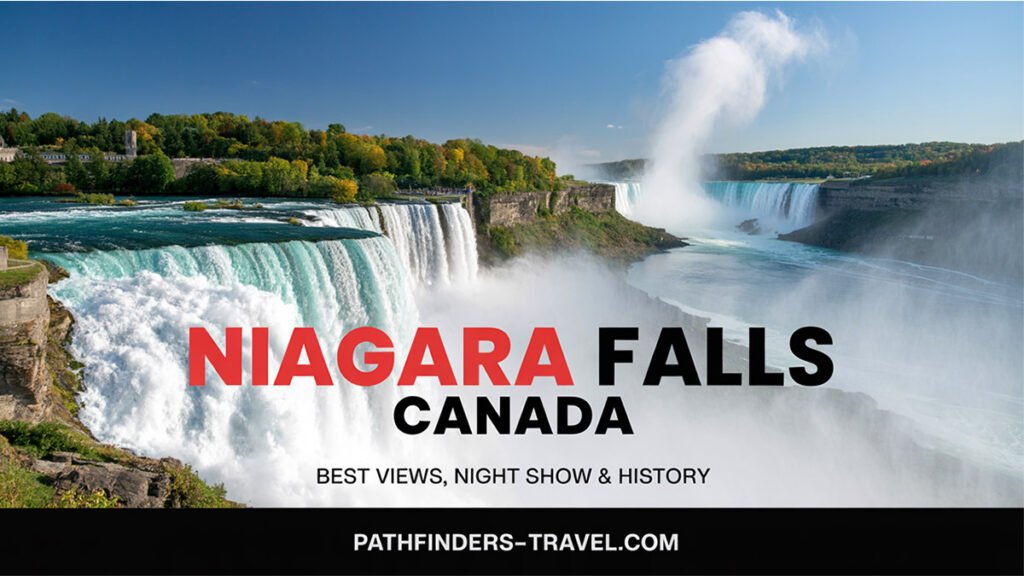Estimated reading time: 14 minutes
Key Takeaways
- The Canadian side of Niagara Falls offers the most spectacular views of Horseshoe Falls, with panoramic vistas and well-developed infrastructure.
- Visit during late spring (May-June) or early fall (September-October) for optimal weather conditions and fewer tourists.
- Don’t miss the night illumination show that transforms Niagara Falls with colorful lights and occasional fireworks displays.
- Niagara Falls formed approximately 12,000 years ago during the last Ice Age and continues to erode at about one foot per year.
- The name “Onguiaahra” comes from Indigenous peoples and translates to “Thundering Waters,” reflecting both the sound and spiritual significance of the falls.
Table of Contents
- Introduction
- Overview of Visiting Niagara Falls Canada
- The Best View of Horseshoe Falls
- Experiencing the Niagara Falls Night Light Show
- The History of Niagara Falls Formation
- Onguiaahra: The Thundering Waters Meaning
- Frequently Asked Questions about Niagara Falls Canada
- Conclusion & Travel Tips
Introduction to Visiting Niagara Falls, Canada
Welcome to Niagara Falls, Canada
Visiting Niagara Falls, Canada, puts you face-to-face with one of the world’s most spectacular natural wonders. This iconic destination in Ontario attracts millions of visitors annually who come to witness its raw power and breathtaking beauty. The Canadian side offers superior views of the magnificent Horseshoe Falls, mesmerizing night light displays, and rich cultural history.
In this guide, we’ll explore the best viewpoints for experiencing Horseshoe Falls in all its glory, how to enjoy the spectacular night light show, the fascinating geological history behind the falls’ formation, and the deep Indigenous meaning of “Onguiaahra Thundering Waters.” Whether you’re planning your first visit or returning to see this natural marvel in a new light, this comprehensive guide will help you make the most of your Niagara Falls adventure.
Want to see this for yourself? Click here to jump to the video in UHD 4K Resolution.
Overview of Niagara Falls, Canada Travel and Attractions
Niagara Falls captivates visitors with its immense natural power. Every minute, approximately 168 million liters (6 million cubic feet) of water thunder over the 54-meter (177-foot) drop, creating a spectacle that resonates through your chest. This makes it North America’s most powerful waterfall and one of the most impressive natural wonders in the world.
The falls consist of three distinct sections: Horseshoe Falls (the largest, on the Canadian side), American Falls, and Bridal Veil Falls (both on the US side). Together, they create the natural border between Canada and the United States.
Travel Information
The Canadian side of Niagara Falls, located in Ontario, provides visitors with the most impressive panoramic views and robust tourist infrastructure. About 12 million people visit annually, with summer (June-August) being the busiest season. If you’re looking to avoid crowds while still enjoying pleasant weather, plan your trip during late spring or early fall.
Beyond the falls themselves, the area offers numerous attractions. Clifton Hill features family-friendly entertainment with restaurants, shops, and attractions. The region is also home to award-winning wineries in nearby Niagara-on-the-Lake, making it a perfect addition to your itinerary.
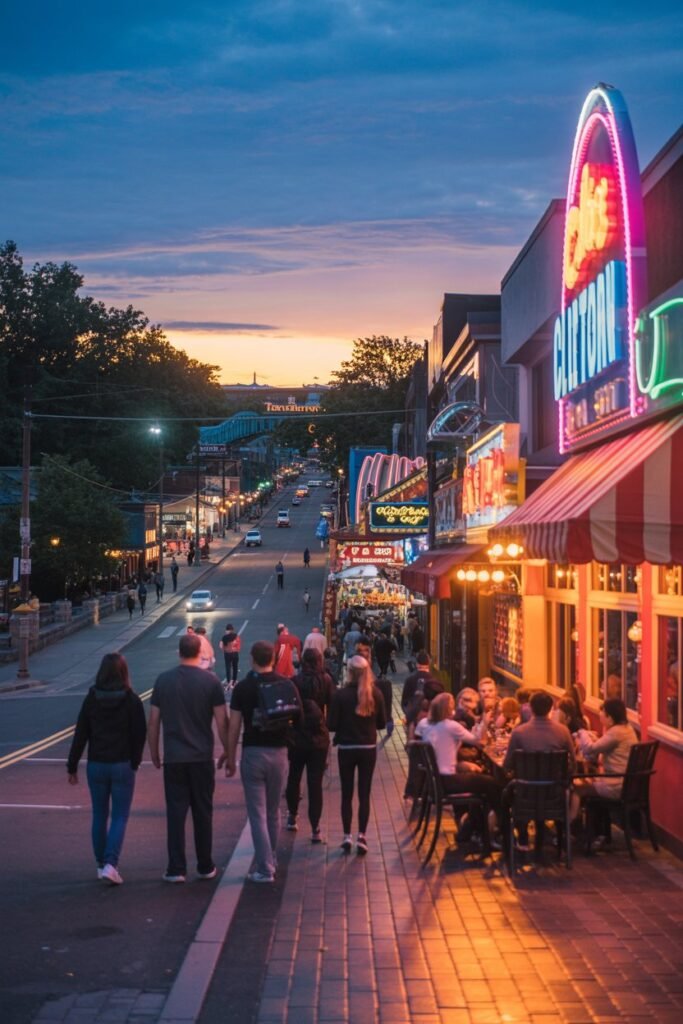
Practical Tips for Visitors
Best times to visit: For ideal weather conditions and fewer crowds, plan your trip during May-June or September-October. Read more about the Best Time to visit Niagara Falls, Canada.
Must-see attractions:
- Journey Behind the Falls – Descend 125 feet through bedrock to tunnels that lead to observation decks beside and behind the thundering waters.
- Skylon Tower – Offers breathtaking 360-degree views of the falls and the surrounding area from its observation deck 775 feet above the falls.
- Niagara SkyWheel – A 175-foot-tall Ferris wheel providing spectacular views of the falls and city skyline.
- Queen Victoria Park – A beautifully maintained garden area with optimal viewing spots for both the American and Horseshoe Falls.
- Hornblower Cruises (Canadian side) and Maid of the Mist (US side) – Boat tours that bring you thrillingly close to the base of the falls.
Best Viewpoints of Horseshoe Falls in Ontario, Canada
When it comes to experiencing the grandeur of Niagara Falls, the Canadian side unquestionably offers superior views of the magnificent Horseshoe Falls. The curved formation of this natural wonder spans an impressive 670 meters (2,200 feet) wide, creating a horseshoe shape that gives the falls their name.
Top Observation Points
Table Rock Welcome Centre stands at the brink of Horseshoe Falls, offering visitors an up-close experience where you can feel the mist on your face and the rumble of the falls beneath your feet. This prime location also serves as the access point for the Journey Behind the Falls attraction, where tunnels lead to observation decks positioned directly behind the cascading water.
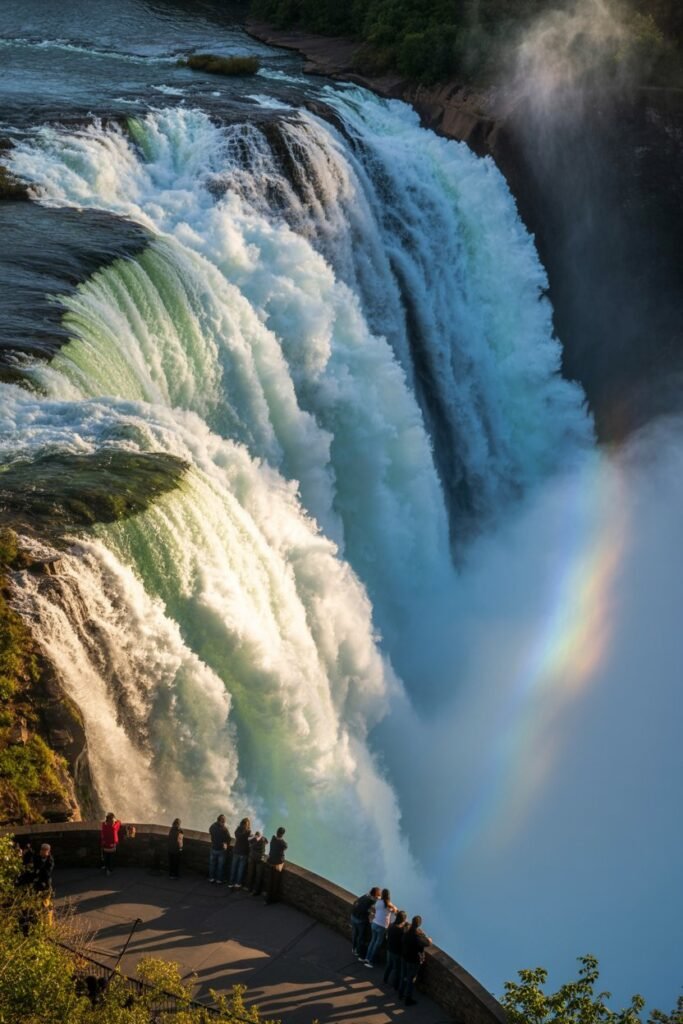
For a bird’s-eye perspective, the Skylon Tower provides panoramic 360-degree views from its observation deck 233 meters (775 feet) above the falls. On clear days, visitors can see up to 130 kilometers (80 miles) in every direction, including views of Toronto and Buffalo.
Queen Victoria Park extends along the falls and offers meticulously maintained gardens with numerous vantage points ideal for photography. The park’s elevated position provides sweeping views of both Horseshoe Falls and American Falls, particularly stunning when illuminated at night.
Experiences Worth Having
For those seeking a more immersive experience, Hornblower Niagara Cruises brings visitors remarkably close to the base of Horseshoe Falls. These boat tours provide a unique perspective from below, where you’ll feel the powerful mist and hear the thunderous roar of 168 million liters of water cascading every minute.
One of the most magical natural phenomena at Niagara Falls is the formation of rainbows in the mist. When sunlight strikes the water droplets suspended in the air, vibrant rainbows materialize across the gorge. For the best chance to witness this spectacle, visit in the morning when the sun is positioned optimally behind you as you face the falls.
Niagara Falls at Night: Illumination and Light Show Guide
As darkness falls, Niagara Falls transforms into a dazzling nighttime spectacle through an elaborate illumination display that has captivated visitors for generations. This free light show bathes the thundering waters in a choreographed array of colors, creating an entirely different but equally magnificent experience.
Night Light Show Details
The falls illumination begins at dusk every night of the year, with powerful LED lights projecting vibrant colors onto the flowing water. The illumination schedule varies seasonally, generally starting earlier in winter months (as early as 5:00 PM) and later during summer (around 9:00 PM).
The modern lighting system uses energy-efficient technology to create stunning visual effects that highlight the natural contours and movement of the falls. During special occasions and holidays, the colors are synchronized with music for enhanced displays.
In summer months (May to October), visitors can also enjoy fireworks displays above the illuminated falls on select nights, typically Friday and Sunday evenings. The combination of colored lights on the rushing water with explosions of light overhead creates a truly magical atmosphere.
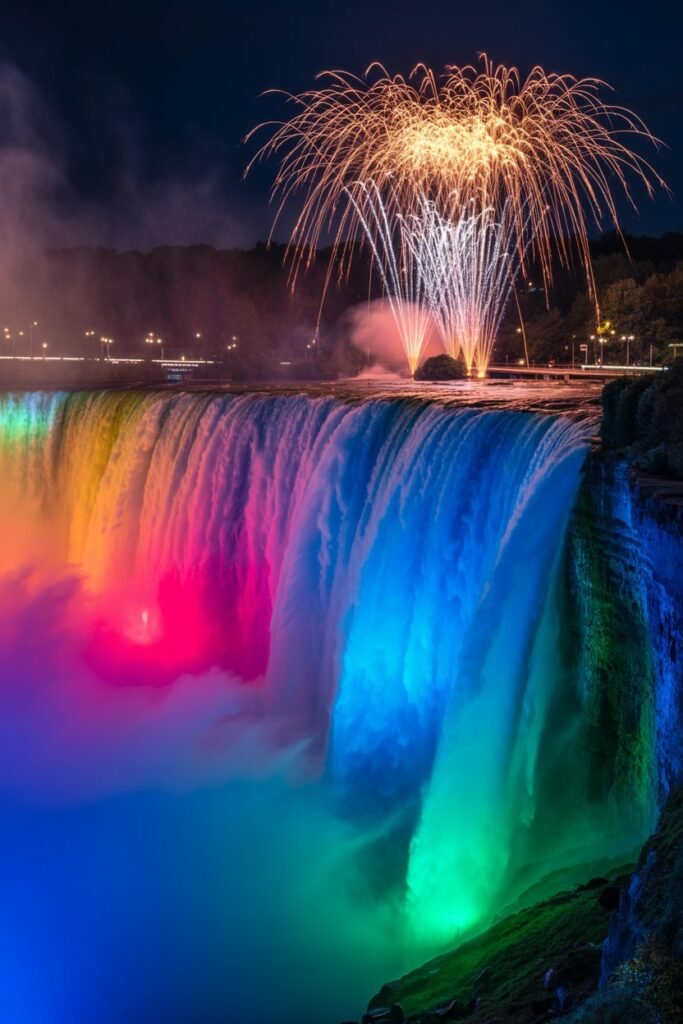
Viewing Tips for Nighttime Photography
For those interested in capturing this spectacular light show, several locations offer exceptional vantage points:
- Table Rock Welcome Centre provides an unobstructed front-row view of the illuminated Horseshoe Falls.
- Queen Victoria Park offers multiple photography spots with different angles of both the American and Horseshoe Falls lit up against the night sky.
- The observation deck at the Skylon Tower provides an aerial perspective of the entire illuminated scene.
Photography enthusiasts should bring a tripod for stable long-exposure shots that capture both the movement of the water and the brilliant colors of the lights. Setting your camera to a slower shutter speed (1-4 seconds) will create smooth, silky water effects while showcasing the vibrant illumination.
For a truly unique perspective of the night show, consider an evening cruise on the Niagara River. These special tours position you at the base of the falls, surrounded by the illuminated curtain of water and mist.
History and Geological Formation of Niagara Falls
The dramatic landscape of Niagara Falls began forming approximately 12,000 years ago as the last Ice Age came to an end. This relatively young geological feature continues to change, offering visitors a glimpse into the powerful forces that shape our planet.
Geological History
During the last ice age, massive ice sheets up to 2-3 kilometers thick covered much of North America. As these glaciers began to melt and retreat northward, enormous volumes of meltwater filled the newly formed Great Lakes basin. This water began flowing through the Niagara River channel, eventually carving out what would become the Niagara Gorge.
Initially, the falls were located about 11 kilometers (7 miles) downstream at what is now Queenston and Lewiston. Over thousands of years, the powerful force of the water gradually eroded the soft underlying shale layer, causing the harder dolomite cap rock to collapse. This process of erosion has caused the falls to slowly retreat upstream to their current location.
The formation of separate falls (Horseshoe, American, and Bridal Veil) occurred when the retreating waterfall encountered Goat Island, which split the river into channels. The Canadian side received greater water flow, leading to the more rapid erosion that created the distinctive horseshoe shape.
Notable Geological Facts
The bedrock that forms Niagara Falls consists primarily of dolomite and shale deposited during the Silurian period, approximately 425 million years ago. The more resistant dolomite forms the cap rock at the top of the falls, while the softer shale underneath erodes more quickly, creating the distinctive overhanging profile.
Before water diversion for hydroelectric power generation began in the early 20th century, erosion occurred at a rate of about 1-1.5 meters per year. Today, with approximately 50% of the water diverted for power generation, erosion has slowed to about 30 centimeters (1 foot) per year.
Scientists predict that in about 50,000 years, if left to natural processes, erosion would cause the falls to reach Lake Erie, potentially draining it. However, modern engineering and water management efforts help control erosion to preserve both the falls’ scenic beauty and their hydroelectric potential.
Onguiaahra Thundering Waters: Indigenous Meaning and Cultural Significance
Long before European explorers documented Niagara Falls, Indigenous peoples inhabited the region and held deep connections to this natural wonder. The name “Niagara” derives from “Onguiaahra” (pronounced on-gee-ah-rah), a term used by the Neutral Confederacy who lived in the area.
Indigenous Significance
The term “Onguiaahra” translates to “Thundering Waters” or “Thunder of Waters,” a name that perfectly captures both the acoustic power and visual magnitude of the falls. This name reflects the deep observational connection Indigenous peoples maintained with the natural world, recognizing and naming places based on their sensory and spiritual qualities.
For the Haudenosaunee (Iroquois) and Anishinaabe peoples, the falls represented more than just a geographical feature—they were a sacred place embodying spiritual power. The mist rising from the falls was believed to carry prayers to the Creator, while the thunderous sound represented the voice of powerful spirits.
Indigenous oral traditions speak of Niagara Falls as a place of renewal and transformation. The perpetual flow of water symbolized the continuous cycle of life, death, and rebirth central to many Indigenous worldviews.
Historical Role
Archaeological evidence indicates human presence in the Niagara region dating back approximately 12,000 years, coinciding with the formation of the falls themselves. For millennia before European contact, Indigenous communities used the falls and surrounding area as:
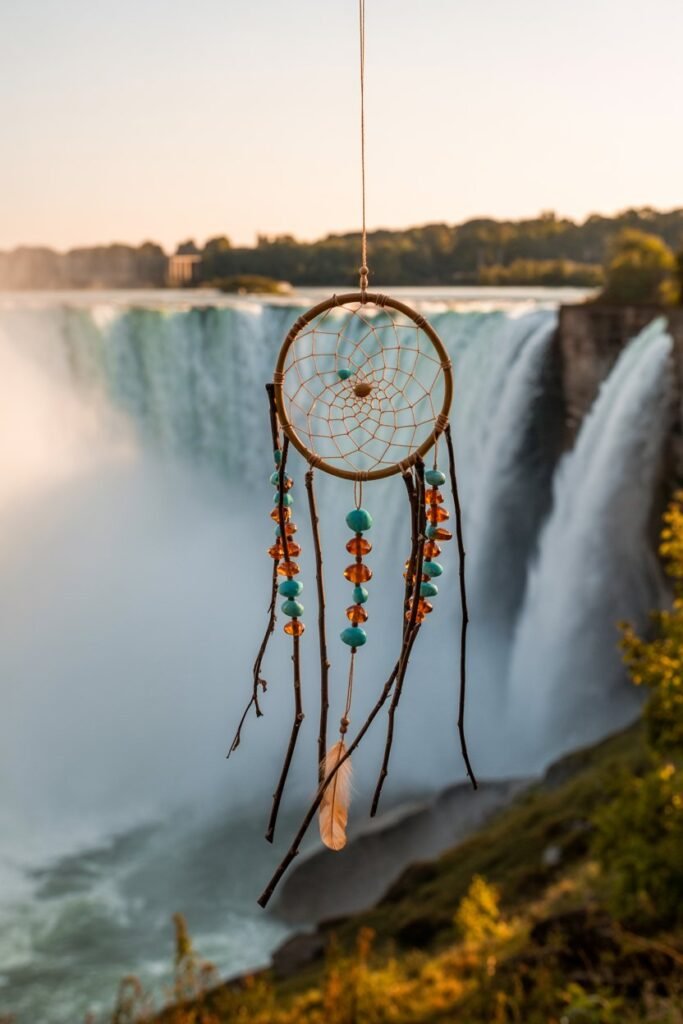
- A critical landmark for navigation and territorial boundaries
- A valuable fishing location, particularly during seasonal fish migrations
- A gathering place for trade, diplomacy, and cultural exchange
- A site for important ceremonies and spiritual practices
The falls also played a significant role in Indigenous storytelling. Various legends explain the falls’ creation and power, often featuring supernatural beings or cultural heroes. These stories served not only as entertainment but as educational tools that conveyed important cultural values and ecological knowledge to younger generations.
Today, many Indigenous communities in Ontario continue to maintain cultural connections to Niagara Falls, recognizing it as part of their ancestral heritage and participating in its interpretation for visitors.
Frequently Asked Questions about Niagara Falls, Canada
When is the best season to visit Niagara Falls Canada for weather and smaller crowds?
The ideal season is late spring (May-June) or early fall (September-October), when the weather is mild and the Canadian side is less congested. During these periods, the weather tends to be pleasant—warm but not excessively hot—and visitor numbers are lower compared to the peak summer months. This means more comfortable experiences at popular viewpoints, shorter lines, and better photo opportunities. Summer (June-August) has full services but comes with larger crowds and higher prices.
How much money should I budget daily for a Niagara Falls, Canada, trip?
Daily costs depend on your travel style and whether you stay near Horseshoe Falls or in nearby towns. For example, a budget traveler can expect to spend around CAD 60–90/day on basics (simple lodging, inexpensive meals, public transit), while mid-range travelers might budget CAD 200–250/day when including nicer hotels, dining, and some tours. Those seeking more luxury could expect to spend significantly more.
How many days do you need to explore the Canadian side of Niagara Falls?
Plan at least two days to enjoy daytime and night attractions such as the light show and boat tours, with three days giving more room to explore nearby Niagara-on-the-Lake. If you want to explore more of the surrounding area (like Niagara-on-the-Lake, wineries, or hidden gems), then **three days** or more gives more flexibility and less rushed travel.
Is visiting Niagara Falls, Canada, in the off-season cheaper, and what are the trade-offs?
Visiting in off-peak months like winter or early spring lowers costs, though some tours close and colder weather reduces comfort. However, some attractions (boat cruises, seasonal tours) may have limited operation or be closed due to weather. Also expect colder or wetter conditions and shorter daylight hours.
What safety and travel tips should visitors know for Niagara Falls, Canada?
Bring layers and waterproof gear since mist at Table Rock and other viewpoints can leave clothes damp, and wear sturdy shoes for slippery walkways. Good walking shoes are essential because paths can be slippery. For night photography or of the light show, a tripod helps. Also, plan ahead for accommodation and tickets during high season and major events, and consider weekday visits to avoid crowds.
Conclusion and Practical Travel Tips for Niagara Falls, Canada
Visiting Niagara Falls, Canada, is a remarkable experience that blends natural power with cultural depth. From the sweeping views of Horseshoe Falls to the dazzling night illuminations, the Canadian side provides perspectives that highlight both the scale and the beauty of this wonder. Travelers can enhance their visit by exploring diverse vantage points, taking part in immersive boat tours, or enjoying the gardens and walkways along Queen Victoria Park
The geological story of Niagara Falls adds another dimension, reminding visitors that this landscape has been shaped over thousands of years and continues to evolve. Equally significant is the Indigenous heritage tied to the name Onguiaahra, or “Thundering Waters,” which reflects centuries of spiritual and cultural meaning.
For a balanced itinerary, plan at least two days to capture both daytime and nighttime highlights. Be mindful of seasonal differences: late spring and early fall provide ideal conditions with lighter crowds, while summer offers full access to attractions. Respect conservation measures to help preserve the site for future generations.
Final Travel Recommendations
- Timing: Visit during late spring (May-June) or early fall (September-October) for pleasant weather and fewer crowds
- Duration: Plan at least two days to fully experience both daytime and nighttime attractions
- Viewpoints: Make sure to see the falls from multiple perspectives—from above at Skylon Tower, up-close at Table Rock, and from below on a Hornblower Cruise
- Preservation: Support conservation efforts by respecting barriers, staying on marked paths, and properly disposing of waste
We hope this guide enhances your journey to one of North America’s most magnificent natural wonders. We invite you to share your own Niagara Falls experiences or questions in the comments below.
For more detailed planning resources, consider consulting additional travel guides and the official Niagara Parks website for the most current information on attractions, events, and seasonal activities.
For more breathtaking travel documentaries featuring the wonders of the world in stunning 4K resolution, visit Pathfinders Travel on YouTube.

